Believe it or not, there are tons of top free PR tools that business owners can take advantage of. Since we’ve been in business as a PR agency, we’ve tried every tool, tactic, and trick you can think of (and probably some you can’t). After all that experimentation, there are just a few tools and apps that we rely on to do the majority of our PR work for us — and many of them are free. Some of these tools are mutually exclusive, so don’t worry: you won’t need 10 different tools to do your job. However, all the tools are worth checking out to see which suits you best.
Key Points
- Public relations tools help businesses communicate and connect with consumers, investors, and employees and monitor the progress of their PR campaigns.
- The types of Public Relations tools come under the following categories: media relations, public affairs, crisis communication, and social media communications.
- Public relations (PR) writers use various tools to effectively communicate with their audiences and manage the public perception of their clients or organizations. Here are six essential tools commonly used by PR writers: press releases, fact sheets, press kits, newsletters, speeches, and blogs.
- Deciding on a new business tool that will evolve your entire team’s work processes may feel daunting. Here’s a step-by-step list to help you consider all the important considerations:
Top 10 Free PR Tools
Here’s a list of our favorite free PR tools for business:
#1. HARO
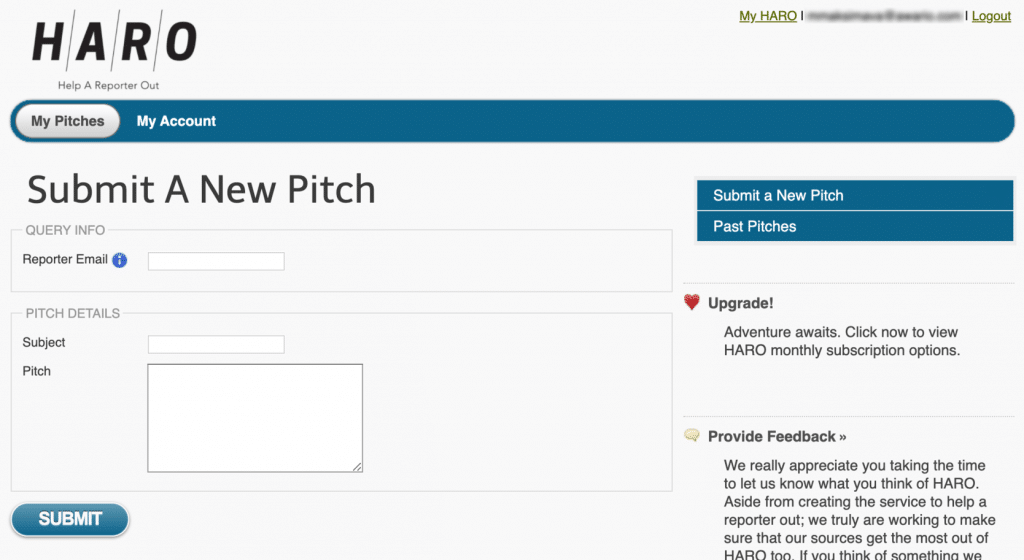
HARO ( ‘Help A Reporter Out’ ) is the largest free quote-mention service in the English-speaking world, now acquired by Cision. It’s one of the many free PR tools that connects journalists and bloggers with relevant expert sources. Sources (that’s you with your brand content) get an automated email with quote requests from journalists and bloggers daily – an excellent way to find media opportunities and get press coverage about your company and your product. The results can be outstanding: your customers and target audience discover more about your business, increasing brand awareness and fostering new relations.
HARO is a global database. The platform reaches over 55,000 journalists and bloggers (more than most free PR tools) and is used by most main media outlets. It’s a truly outstanding tool for both brands and reporters.
Pricing: HARO’s Basic plan is free. The tool offers paid options ranging from $19 to $149/mo.
#2. JournoLink
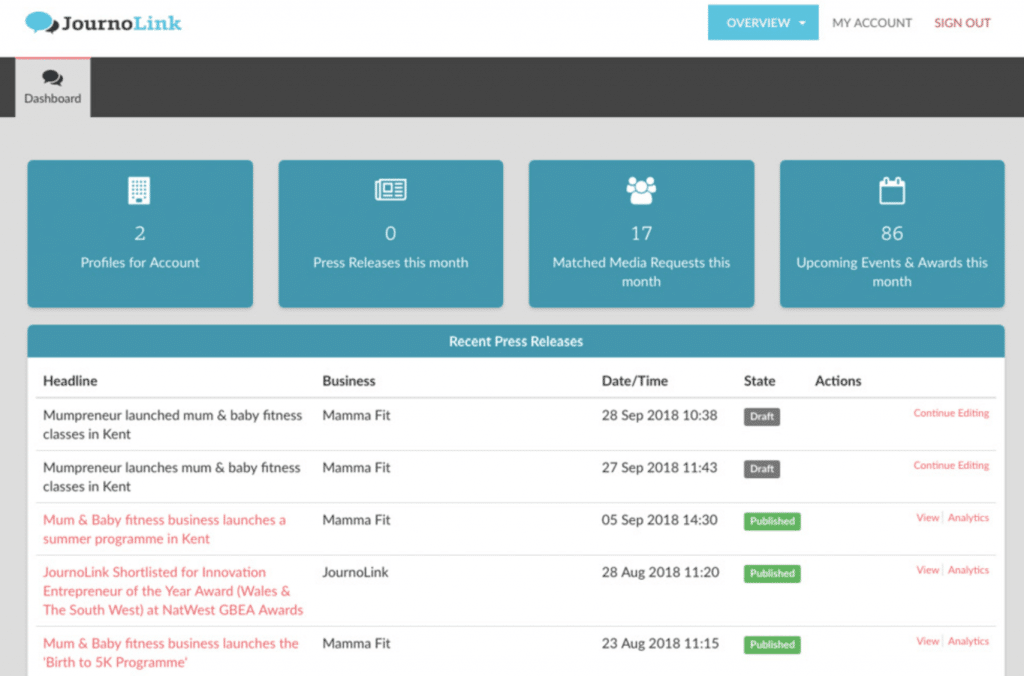
JournoLink is a UK-only resource, but that’s its only disadvantage. The tool helps you distribute press releases and reach out to bloggers and journalists, and for bloggers and journalists – to find you and reach out. You must submit a press release, and the tool will find the matching media. All journalists have to do is submit a media request, which will end up in your hands.
The free tool promises that you don’t need any PR experience or a huge budget to do the task – JournoLink offers enough tips and tools to help you through. Additionally, JournoLink shows you the calendar that gives you access to upcoming events, such as networking and trade shows, award programs, and critical news dates to help you with PR and piggybacking on the news. All that for just £25 a month – a particular plan for startups (only applicable, however, if you pay annually).
Pricing: Like many PR tools on this list, JournoLink offers a free version. Paid plans start at £49/mo, with a special deal for startups at £25/mo (billed annually).
#3. Canva

Canva is a versatile graphic design tool that has become a staple for many PR professionals due to its ease of use and extensive range of features. Available as a free PR tool, Canva offers a wide array of templates and design elements that can be utilized to create visually appealing press releases, social media graphics, presentations, and other PR materials.
The platform’s drag-and-drop interface is intuitive, making it accessible even to those with little design experience. Users can choose from thousands of pre-designed templates tailored for various PR needs, such as event announcements, media kits, and promotional posters. Additionally, the Canvas library includes millions of stock photos, illustrations, icons, and fonts, allowing extensive customization to fit specific brand aesthetics.
For PR professionals, Canvas collaboration features are particularly beneficial. Team members can work on designs simultaneously, leave comments, and make edits in real-time, streamlining the approval process. The free version of Canva provides ample storage and access to essential tools, though premium features like additional templates and design elements are available with a subscription.
Overall, Canva is an invaluable tool for creating high-quality visual content, enhancing the effectiveness of PR campaigns, and ensuring consistent and professional presentation across all communication channels.
Pricing: Many Canva features are free forever, but you can upgrade to access all its possibilities and resources for $7/mo.
#4. Visme
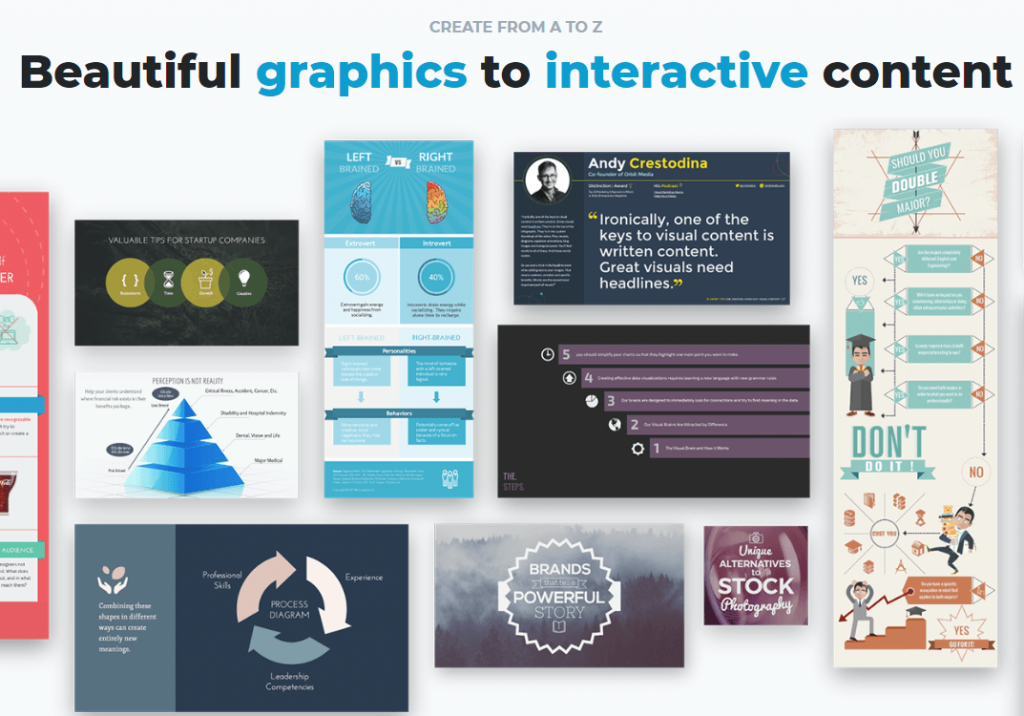
Visme is another excellent free PR tool for creating stunning visuals and graphics to convey information. From presentations and infographics to reports and flyers, you can make any visual you need for your next PR campaign. With tons of documents, presentations, infographics, and other templates readily available to customize, you can quickly and easily assemble a branded packet of media and press materials for your team.
Pricing: Visme offers a free-for-life plan with limited templates and storage, but premium plans start at just $14/month, paid annually.
#5. Hunter
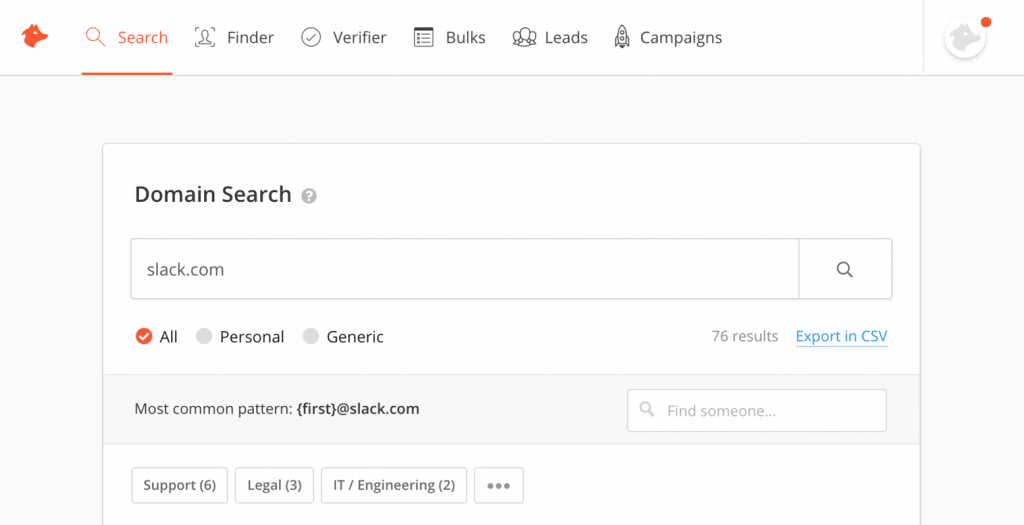
The most complex tasks are often the ones that seem simple enough. In this case, I’m talking about finding email addresses. Unsurprisingly, you need a tool for that, too.
Hunter is a useful tool for finding email addresses across the web via a company’s website domain. You enter a domain name to launch the search, and the tool lists all the people working in a company with their names and email addresses.
Pricing: The free version of the tool lets you run up to 50 monthly searches. Paid plans start at $49 (for Starter) and go up to $399/mo (Enterprise).
#6. Muck Rack
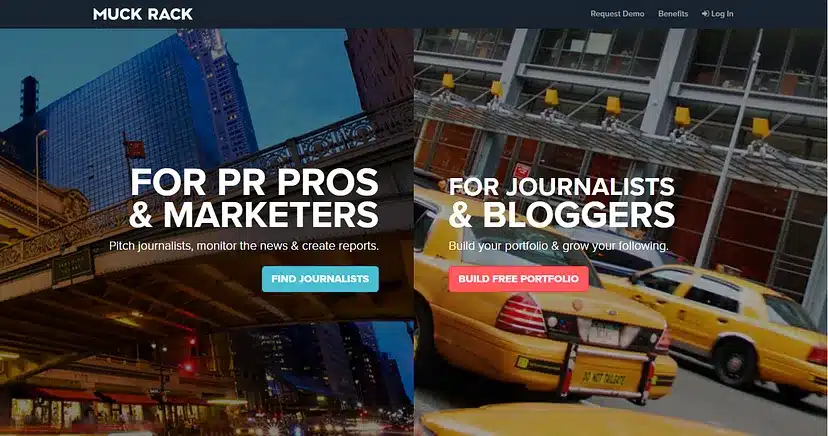
Muck Rack is a valuable tool for PR professionals. It offers a robust platform to connect with journalists and manage media relations. Its free features include access to a limited media database, allowing users to search for journalists by beat, outlet, and location. This helps in building targeted media lists for pitching stories.
Muck Rack also provides free tools for tracking media mentions, monitoring news in real-time, and measuring the impact of PR campaigns. The platform’s intuitive interface and comprehensive search functionality make it easy to find the right contacts and stay updated on relevant industry news. In general, Muck Rack’s free tools help streamline PR efforts, enhance media outreach, and improve the effectiveness of communication strategies.
Pricing: Muck Rack offers a free trial. Once the trial is over, you must contact them to request a quote.
#7. Infogram
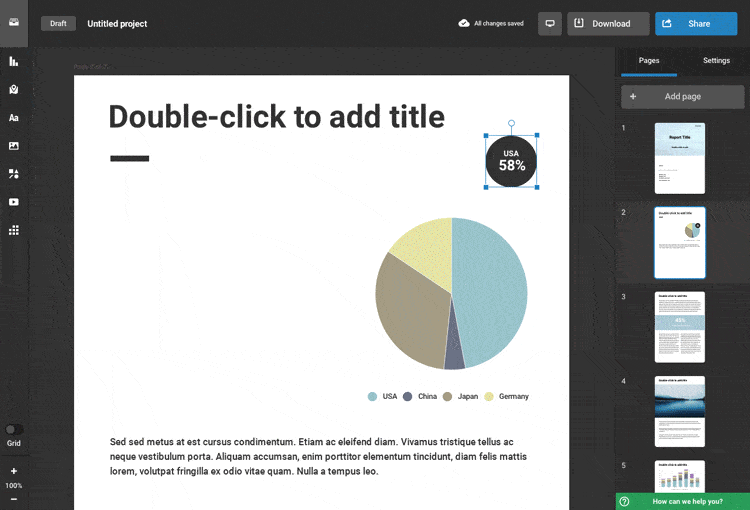
For PR professionals, presenting the information to the audience is almost as important as having the information. PR managers know it’s all about reaching clients and reporting to them (and bosses). Infogram is an affordable platform with an extremely flexible pricing scheme—there’s even a “forever free” option. It allows you to create reports, charts, maps, graphics, and dashboards. This tool can easily present all analytics, news, releases, and marketing materials.
The tool is easy to understand and use. It offers a wide variety of templates, pictures, and icons. You can import data even when using the tool for free. It’s a good tool for any content that requires a professional presentation.
Pricing: Infogram’s free Basic plan lets you create up to 10 projects. Subscriptions start at $19 and go up to $179/mo.
#8. Submit

Submit. co positions itself as the place to get press coverage for startups specifically. The software lists different sites, including startup directories, review sites, and communities where you can get coverage or create startup profiles. The tool is free, which is a serious advantage, as most PR software is not that cheap, partly explaining the website’s outdated design. It’s easy to use, however, and the tool doesn’t require any effort on your side apart from the actual submission.
Pricing: Submit is free to use.
#9. Venngage
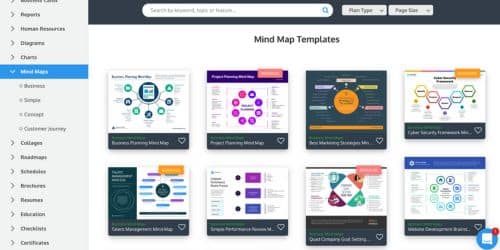
This tool specializes in DIY graphic design for small businesses. Venngage offers stunning infographic templates that you can easily customize with its intuitive drag-and-drop editor. No design knowledge is needed.
PR professionals can also use unique, professionally designed templates for social media, logos, presentations, proposals, reports, and more. Signing up and using many of the templates is free.
Pricing: Venngage’s free plan lets you create 5 infographics. You can subscribe to a paid version for more features for $19 (the Pro plan) or $49 (Business) monthly.
#10. Google Analytics
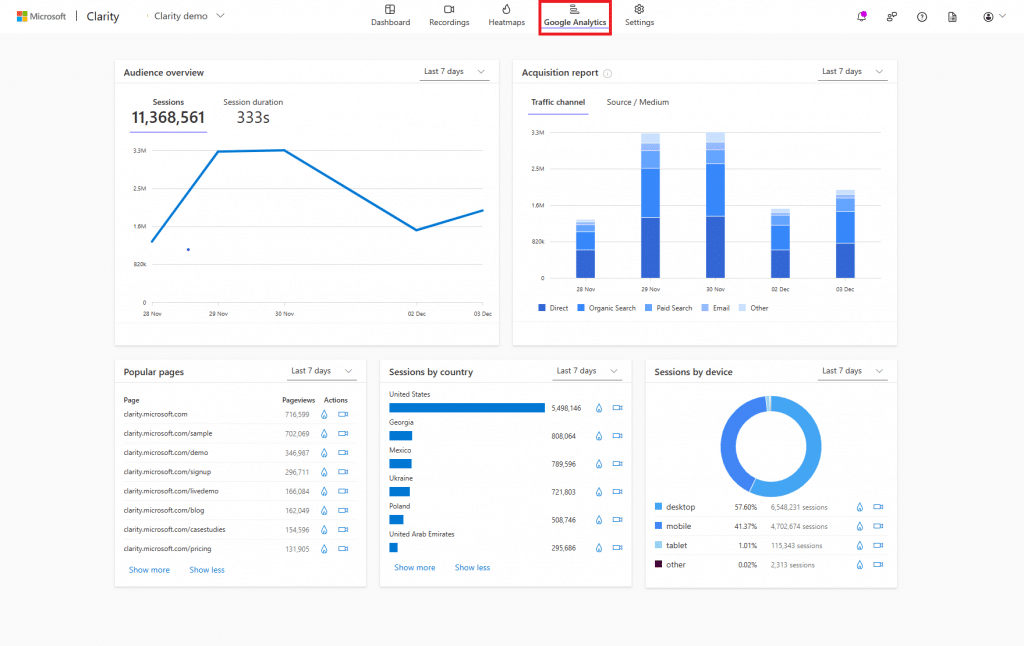
Google Analytics is a powerful, free tool that PR professionals use to measure and analyze website traffic and user behaviour. By integrating Google Analytics with a website, users can gain valuable insights into how visitors interact with their content, which is crucial for evaluating the impact of PR campaigns.
The platform provides detailed reports on various metrics, including page views, session duration, bounce rate, and traffic sources. This data helps PR professionals understand which campaigns drive the most traffic, identify high-performing content, and refine their strategies accordingly. Additionally, Google Analytics tracks conversions and user engagement, clearly showing how PR efforts translate into tangible results.
With real-time analytics, audience segmentation, and goal tracking, Google Analytics enables PR teams to make data-driven decisions, optimize their online presence, and effectively demonstrate their PR activities’ ROI. Its comprehensive capabilities make it an essential tool for any PR strategy.
Pricing: Google Analytics offers a tiered pricing structure with two main versions: Google Analytics and Google Analytics 360, the paid version. The paid version starts at approximately $150,000 per year.
What Are Public Relations Tools?
Public relations tools help businesses communicate and connect with consumers, investors, and employees and monitor the progress of their PR campaigns. These tools assist companies in marketing their services or products and can affect their overall visibility and reputation. Examples of public relations tools include press releases and partnering with media. These tools help companies attract customers and increase their overall bottom line.
What Are the Essential Tools of PR?
Public Relations tool types are unique combinations of business and communication skills. PR is all about strategic communication, and for it to succeed, businesses need to set up, execute, and monitor the different types of public relations processes.
The types of Public Relations tools come under the following categories:
#1. Media Relations
Media Relations is a public relations tool that gets attention from journalists, broadcasters, bloggers, and other platforms.
It primarily aims to strengthen the bond and connection between an organization and its stakeholders, or people directly or indirectly attached to the company.
PR professionals take several short-term and long-term initiatives to garner these valuable relationships. There are also online platforms that help PR agencies get both paid and earned media coverage.
Companies usually contact potential journalists and bloggers by sending pitches through these platforms, one of which is HARO (Help a Reporter Out). Once the journalist finds the pitch newsworthy, he turns it into an article or part of the campaign he is working on.
The outcome is a significant boost in the brand’s popularity and recognition, customer conversions, and media coverage, with subsequent positive effects.
Read also: Media Relations: Everything You Should Know (Updated)
#2. Community Relations
Community Relations is another prominent PR tool that builds a meaningful and positive relationship between an organization and a local community through various campaigns. The purpose is to ensure the public’s interest aligns with the brand/business.
Through PR agencies like Lamphills, organizations commit to the community’s interests and gain a significant competitive edge over others. Community Relations result in a positive connection that boosts the company’s image, something all businesses eventually look for.
Companies can use various mediums, including their social media profiles, to execute community public relations strategies. Similarly, donations and sponsorships often provide organizations with various opportunities to demonstrate their support and care for the local communities.
#3. Public Affairs
At a more significant level, public affairs helps maintain the relationships between the government and politicians.
This is a particular type of public relations tool. The function of a PR specialist is to ensure that the organization’s (in this case, the Government’s) views are aligned with the interests of the public. The Public Affairs team generally works in an essentially synchronized manner so that only the most compelling and relevant information passes on for decision-making at the administrative level.
Public Affairs PR is quite demanding, requiring industry insights and data-driven metrics for effective communication. In-person meetings, careful drafts, and in-depth research are necessary for Public Affairs.
#4. Crisis Communication
Crisis Communication, another type of PR, involves dealing with any crisis.
The crisis can be anything and of varying intensity. The company’s founder might engage in an unwanted spat with a person on social media, or a defective product line might result in a negative public image for a brand.
In such situations, crisis communication specialists come to the forefront and explain the problem with maximum transparency to maintain the organization’s positive image in the eyes of the customers and the public.
In crisis communications, the company’s spokesperson uses channels like press releases, social media, and media coverage campaigns to ‘clear the air’ around the situation. For this, internal communication with the organization’s employees is as important as external communication because everyone must be on the same page when handling the crisis.
#5. Social Media Communications
Social Media Communication is a PR tool for promoting a company’s reputation and achieving positive outcomes. Platforms such as Facebook, Instagram, Twitter, and LinkedIn have become integral communication channels for most organizations.
Outreach happens the fastest on social media, and social media communication also generates exponential results, especially when campaigns collaborate with social media influencers.
It is a fact that consumers feel more confident and comfortable buying anything online when a social media influencer recommends it. Social media communications as part of PR help facilitate seamless communication between an organization, its customers, and consumers, irrespective of geographic boundaries.
Can PR Be Free?
Public relations (PR) can be free, particularly when it involves earned media rather than paid media. Below, I have provided a checklist guide on how you can achieve PR for free:
PR Success Without Incurring Costs Checklist
What Are the 6 Tools of a Public Relations Writer?

Public relations (PR) writers use various free and paid tools to effectively communicate with their audiences and manage the public perception of their clients or organizations. Here are six essential tools commonly used by PR writers:
#1. Press Releases
The press release is the basic building block of a publicity program concerned with story placement. It summarizes vital information about the product or service in a way that will catch the media’s attention. Just as the marketer would customize the advertising message for each target, he needs to customize press releases for the various media he contacts.
#2. Fact Sheets
A press release should be written for use without any editing. That means all the relevant information must be included. There may be additional important information that doesn’t fit into the press release. That’s where the fact sheet comes in. Fact sheets include more detailed information on the product, its origins, and its particular features.
#3. Press Kits
The press kit pulls together all the press releases, fact sheets, and accompanying photographs about the product into one neat package. A comprehensive folder can be an attention-getter and keep the provided materials organized.
Read also: HOW TO CREATE A PRESS KIT WITH EXAMPLES AND FREE TEMPLATES
#4. Newsletters
Newsletters are vital for PR writers, offering a regular and direct communication channel with clients, customers, and stakeholders. Typically distributed via email, newsletters contain curated content such as company news, industry updates, insights, and promotional material. They help maintain engagement, reinforce brand messaging, and build relationships with the audience.
By delivering valuable and relevant information, newsletters enhance the organization’s credibility and foster loyalty. Effective PR newsletters are well-designed, concise, and tailored to the audience’s interests, ensuring high open and click-through rates. They also provide analytics on readership and engagement, enabling PR writers to refine their strategies and improve future communications.
#5. Speeches
Speeches are also widely used for public relations. Key position holders such as the managing director, general manager, or outside experts deliver speeches on the company’s products, policies, outstanding achievements, etc., before a large audience to gain popularity among various masses. Carefully prepared and effectively delivered speeches to build the company’s image. Speeches delivered during special functions can create a good impression on various groups of people.
#6. Blogs
Blogs provide a platform for organizations to share in-depth articles, opinion pieces, and thought leadership content. PR writers use blogs to establish expertise, provide valuable information to the audience, and improve search engine visibility.
Why Should You Invest in PR Tools?
The adage “time is money” applies to business more than ever, especially PR, where valuable deliverables are expected in a field where results are anything but guaranteed.
It takes time and focused effort to create targeted media lists and build relationships with everyone on that list. These craft eye-catching brand pitches will convert to coverage, and follow through consistently until your brand celebrates a coveted feature.
Investing in PR tools should set a clear goal to save you and your team time. If they do their job, they will help you manage daily PR tasks most efficiently. The increased time on your plate will equal increased daily output and, in turn, high-value media coverage that has your clients or company raving about you and your team.
How to Choose the Right PR Tool for You
Deciding on a new business tool that will evolve your entire team’s work processes may feel daunting. Here’s a step-by-step list to help you consider all the important considerations.
Also, remember that live demos or trial versions are available for most platforms, so it’s easier than ever to try them before making a big commitment.
#1. Communicate With Your Team
Buying a business tool is an investment, not only of money but of team buy-in. PR Daily recently reported that one of the top communications trends for 2024 will be bringing your team into key company decisions like this:
Top-down decision-making is dead. Those affected by strategies and policies—big and small—need to have a voice. Leaders are required to get constructive feedback from myriad stakeholders.
So, start by asking your team questions like:
- Where are we spinning our wheels these days?
- Which tasks are taking longer than you feel necessary?
- Which tasks should be replaced so that we can put our energy into more substantial work like creative messaging?
If your team works remotely, you may also need to determine some must-haves about the PR tool, like a web-based one that’s easy for team members to access from home.
Read also How to Create a PR Team for Your Business
#2. Define Your Objectives
The second step in choosing PR tools is to define what you want to achieve with your PR campaign or project. You need specific, measurable, achievable, relevant, and time-bound (SMART) objectives aligning with your business goals and vision. Your objectives will guide your selection of PR tools and technologies to help you achieve them. For example, you aim to increase brand awareness. In that case, you might choose tools and technologies to help create and distribute engaging content, such as blogs, podcasts, videos, or social media platforms.
#3. Evaluate Your Options
The third step in choosing PR tools and technologies is to evaluate your options based on your audience, objectives, budget, and resources. You must consider each option’s features, benefits, costs, and risks and compare them with your needs and expectations. Along with their fit with your current systems and procedures, the tools and technologies you select must also be compatible, scalable, and integrated. Consider aspects like support, security, usability, functionality, and reliability when weighing your selections.
#4. Test and Optimize
The fourth step in choosing PR tools and technologies is to test and optimize them before and after implementing them. You must conduct pilot tests, user feedback sessions, and quality checks to ensure that the tools and technologies you choose work as intended and meet your audience’s and your standards. You also need to track and analyze the performance and impact of your tools and technologies, using metrics and indicators that relate to your objectives. In addition, you need to identify what works well and what needs improvement and adjust accordingly.
#5. Stay Updated
Maintaining current knowledge of the most recent advancements and breakthroughs in the PR industry is the fifth stage in choosing PR tools. You must stay updated on the latest trends and problem objectives. To improve your PR strategy and tactics, you must investigate new tools and technologies and gain knowledge from case studies and best practices. You must constantly assess and update your PR tools to remain efficient, successful, and current.
#6. Learn and Grow
Learning from your experiences and results is the sixth and last phase in choosing PR tools. You must take stock of your accomplishments and shortcomings to derive valuable lessons and insights to advance your PR expertise. You must disseminate your conclusions and input to your stakeholders, clients, and team to solicit their opinions and recommendations. To improve your career and build your network and PR portfolio, you must also look for new challenges and chances.
Bottom Line
Public Relations is an ongoing process irrespective of the function that an organization has implemented. Choosing and emphasizing PR tools helps organizations scale their business, attract new clients and customers, and maintain long-term, healthy relationships with them.
When you think about it, there’s no single top free PR tool on the market – every PR team is unique and might find different PR tools better. To make the right choice, consider the features you need from your PR tool and try at least a few solutions before creating your PR tech stack.
Similar Articles
- BEST FREE PRESS RELEASE DISTRIBUTION WEBSITES IN 2024
- HOW TO WRITE & SEND OUT PRESS RELEASE EMAILS WITH TEMPLATES
- These 10 Root Cause Analysis Tools Will Help You Solve Any Problem Fast
- 15 INTRIGUING PR TRENDS TO WATCH OUT FOR NOW!! (DETAILED INSIGHTS)






